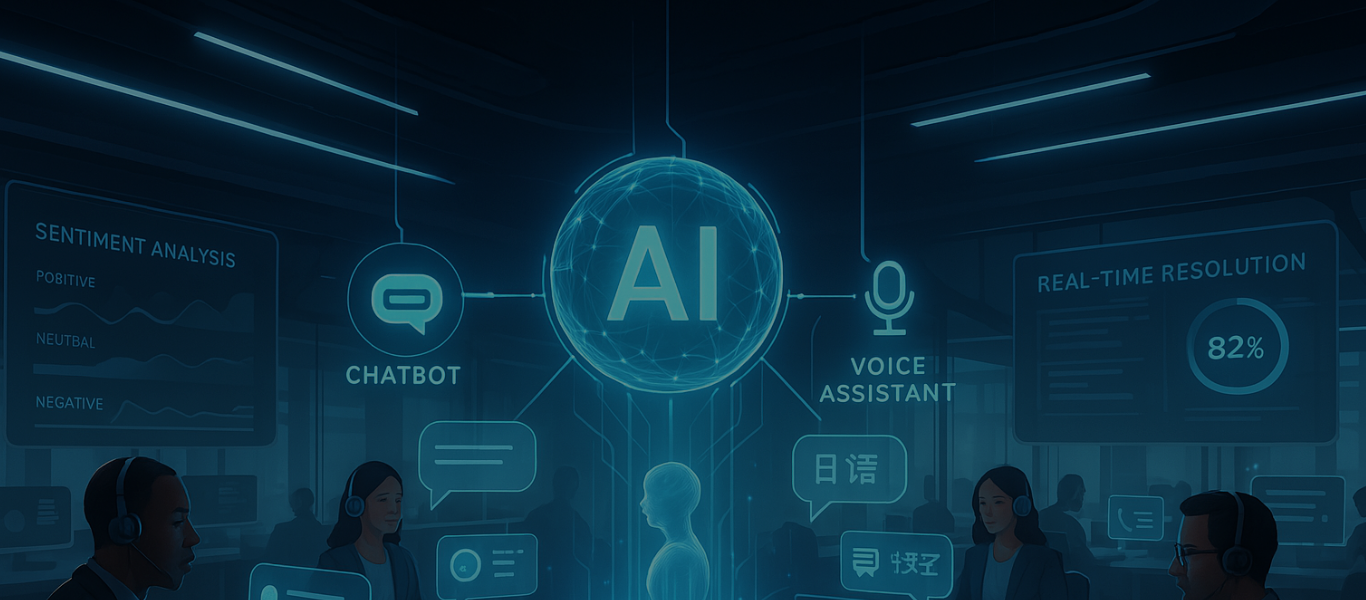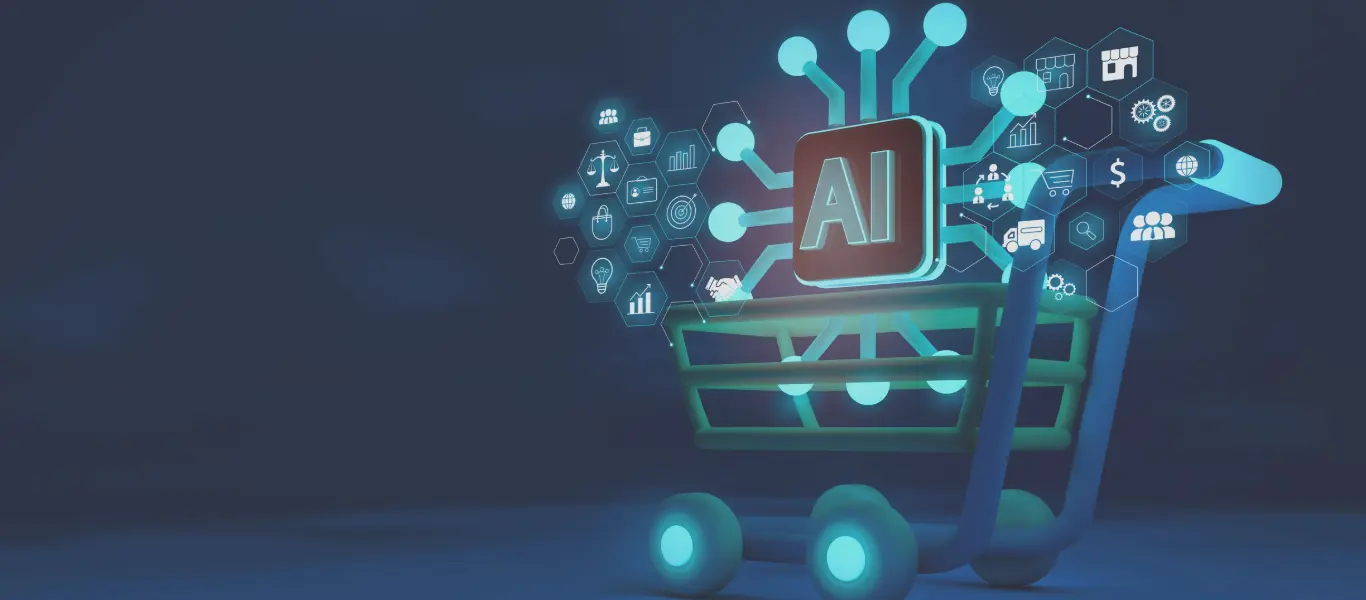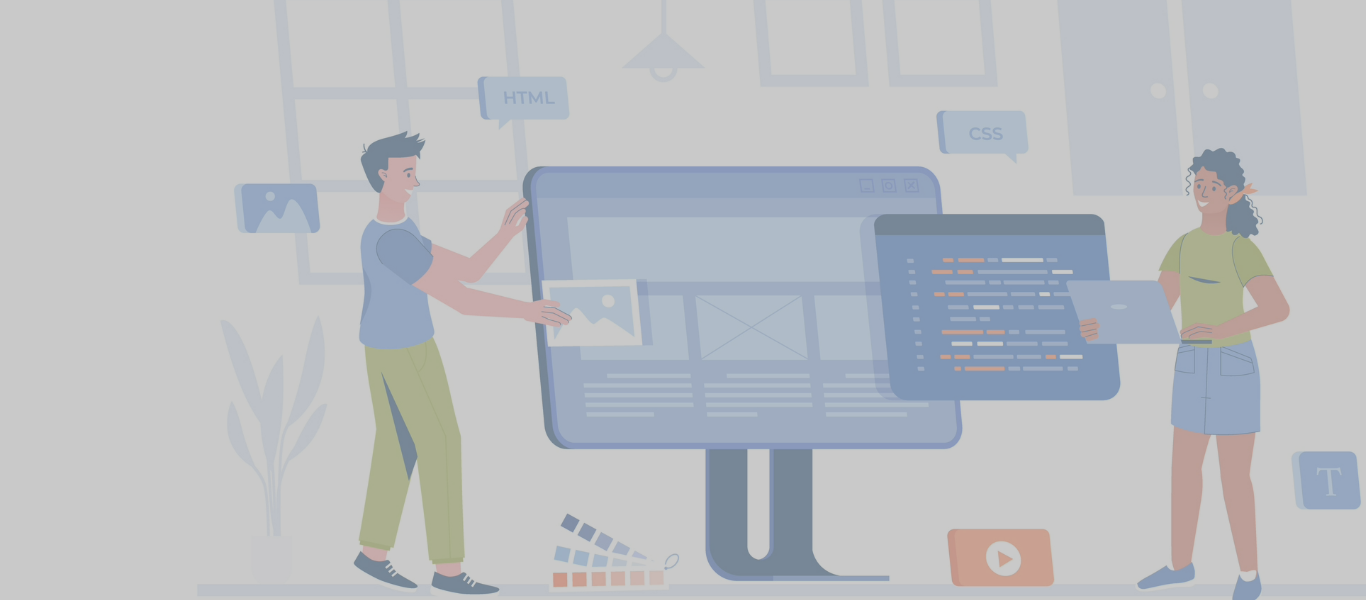In Part 1 of this 3-part series, we highlighted the fundamental differences between monolithic, headless, and composable architectures, and provided an overview of the types of businesses each is best suited to support. And while Part 2 focuses on comparing the 3 architectures across 8 key dimensions impacting core business functions, UX, and CX, here we’ll dive into the more strategic and long-term planning considerations involved in choosing the right architecture.
COMPARATIVE ANALYSIS
1. Integration Complexity
- Monolithic: Having prebuilt integrations for common tools and services, and all your data residing in a single, unified system, can make for a simpler integration process initially, but flexibility is restricted as integrations are limited by platform compatibility. Furthermore, the tight coupling of components means any updates to the frontend need to be made directly into core code on the backend, which makes the integration of new features or third-party services challenging, as well as any such changes to the platform carry the risk of impacting existing integrations.
- Headless: Thanks to APIs, headless architecture offers easy integration with third-party tools and services, but businesses need to develop two separate applications – the frontend and the backend. This has the benefit of updates not affecting integrations directly but adds complexity to the integration process.
- Composable: This architecture enables the ultimate flexibility to select and integrate best-of-breed tools to create a completely tailored solution with microservices that can scale independently to handle integration demands. And due to its modular nature, integration issues can be isolated to specific microservices. However, it is the most complex, requiring significant expertise in microservice integrations, numerous integrations across microservices can also pose a challenge for some organizations.
Key Takeaway: Monolithic architecture offers the most simplicity but lacks flexibility and scalability for complex integrations. Headless offers good flexibility and scalability but requires custom development and comes with API management overhead. Composable provides ultimate flexibility and scalability but demands significant technical expertise and resources. The best choice depends on several factors, including your specific integration needs and budget, while also considering the number and complexity of required integrations, desired future growth, and your team’s development expertise.
2. Development Resource Requirements:
- Monolithic: Having a unified software design where the frontend and backend are tightly integrated makes this architecture relatively simple to manage, but it does require highly specialized developer resources with expertise in the specific technologies and languages used in the platform. Given that even small updates to the frontend require changes to be made directly into core code on the backend, developers can easily become overburdened by ‘simple’ requests from business teams that take valuable time away from more innovative development that drives greater business impact. Furthermore, as headless and modern composable architectures continue to grow in prominence, it will become increasingly more difficult and costly to attract and retain talent with the specialized skills and knowledge required to support monolithic solutions as developers tend to gravitate to the most modern technologies.
- Headless: Owing to the decoupled nature of the architecture, independent updates for the frontend and backend can be faster, but it requires developers that have expertise in both APIs and specific technologies for both frontend and backend systems, as well as maintaining separate knowledge bases for each. However, the talent pool can be larger as developers who are generally familiar with working with APIs would have a foundational understanding of how to interact with these systems, and headless technologies often enable non-technical business users to make some frontend changes directly without burdening the development team. For example, a headless CMS may allow users with editing access to create and modify content (text, images, etc.) without needing coding knowledge, or to drag-and-drop pre-built frontend components to build simple layouts.
- Composable: Has many of the same advantages as headless, in addition to enabling even more highly specialized development. While each component can leverage specialized developers utilizing best-of-breed technology and an agile approach to develop and update them independently, this can also necessitate a larger team. However, unlike in a microservices architecture, deep expertise in each component’s underlying code is not always necessary, as composable platforms allow for plug-and-play capabilities. Knowledge management becomes more complex when working with numerous components, but the flexibility and modularity of the architecture can offset this complexity.
Key Takeaway: Monolithic architecture is typically the easiest to manage with a smaller team, but having tightly integrated components burdens developers for even small changes, and over time, it may become more difficult to find developer resources with the specific, specialized skills to work with your monolithic solution. Headless may require a larger team with specialized skills but offers faster development and wider access to the necessary talent. Composable offers the most flexibility and specialization but is the most complex to manage. Another consideration is the market availability and cost to hire and train skilled developers with the expertise required to support your specific technologies.
3. Change Management
- Monolithic: Choosing to stay on a platform built on monolithic architecture avoids any business disruptions from platform migration and the need for training on new workflows, processes, functionality, and interfaces, but working with the platform can become more difficult over time as the customizations and workarounds needed to meet changing business requirements tend to acquire technical debt, leading to diminishing performance, efficiency, agility, and ability to innovate, while increasing complexity. There are also opportunity costs to consider from not having the ability to do the things that headless and composable architectures enable that competitors might be leveraging to gain competitive advantages.
- Headless: Transitioning to a headless architecture can be complex due to the decoupling of the frontend and backend systems, so an incremental approach – where different APIs are rolled out over time – is often preferred over a ‘big bang’ implementation that involves taking down the entire platform and building a new one. This allows businesses to gradually adapt to the new architecture and manage the change more effectively.
- Composable: Implementing a composable architecture involves transforming your entire digital commerce approach. It requires a significant investment in time and resources, including researching and comparing the different platforms and solutions that will compose your system, assembling and testing the system, and comprehensive training on multiple microservices and workflows. However, these issues can be mitigated by adopting an incremental approach, where microservices are introduced and integrated gradually. As needed, new features and functionalities can be added quickly and independently to continuously adapt the platform to changing requirements.
Key Takeaway: Change management difficulty varies significantly. Choosing the status quo by staying on a monolithic platform obviously avoids disruptions, but at the cost of limited future flexibility and scalability, and increasing technical debt. Headless offers a balance between disruption and flexibility but requires managing both frontend and backend changes. Composable demands extensive change management expertise and carries the highest risk of disruption, unless managed in an incremental approach, but the investment is worthwhile for organizations that are poised to exploit the long-term benefits. The best choice depends on your organization’s size, change management capabilities, tolerance for disruption, and long-term vision for the platform. Carefully assess your resources and prepare your team for the chosen approach before making the transition.
4. Upgrading & Future-Proofing
- Monolithic: This is an area where a lot of organizations experience significant pain with AIO platforms. While established monolithic platforms offer mature technology with proven stability and reliable support for current needs, the tightly coupled architecture hinders adaptation to new technologies or emerging trends, potentially slowing down innovation. Being locked into a single vendor also means being at the mercy of their upgrade cycles, which are typically less frequent but more substantial, often requiring significant downtime and careful planning to minimize disruption. While these vendor updates ensure the platform remains compatible with changing regulations and security standards, the upgrade path can be so challenging that many companies choose to eschew updates altogether until maintainability becomes untenable and they’re forced to evaluate other options. Switching platforms later, however, becomes difficult and costly due to data migration and re-development needs.
- Headless: Upgrades can be more modular due to the decoupled architecture, allowing for incremental improvements with minimal disruption. Frontend tools or backend services can be changed without impacting others, facilitating technology adaptation, while open API architecture promotes integration with future technologies and emerging functionalities to keep your platform relevant. On the other hand, keeping different tools updated and compatible adds complexity and ongoing management effort.
- Composable: The very nature of composable architecture’s modular design allows continuous evolution and integration of new functionalities as needed to offer the ultimate future-proofing flexibility. Replacing individual microservices with newer technologies becomes easier, offering seamless adaptation to future innovations, but managing numerous, interconnected microservices requires ongoing effort and development expertise.
Key Takeaway: Composable offers unmatched adaptability and future-proofing potential but requires balancing the agility of quick updates with the complexity of a multi-vendor environment. Headless provides a good balance between future-proofing capabilities and complexity, allowing technological changes within the chosen ecosystem. Monolithic architecture is the easiest to manage initially, but its more limited ability to adapt to future demands might hinder long-term sustainability.
5. Vendor Support
- Monolithic: Mainstream monoliths are from large, well-established companies with extensive resources, support teams, and SLAs, providing peace of mind and access to expertise. Given the centralized support and dedicated teams, they likely offer the easiest vendor support to deal with, but there are also limited customization and vendor lock-in considerations.
- Headless: Offers flexibility and the ability to choose best-of-breed vendors, but there’s added complexity from managing multiple vendors for different services – none of whom may have a comprehensive understanding of your entire system – and who might have varying support levels and SLAs. Those issues can be mitigated by the extensive API documentation for integration and troubleshooting provided by vendors, the robust community support that typically exists, and the ability to choose vendors that meet your service level requirements.
- Composable: Provides highly specialized support, flexibility in support models, and competition between vendors. However, it demands the most effort and expertise in managing support, and troubleshooting across various services from different vendors can be tricky and lead to finger-pointing. Fortunately, there’s the Care without Compromise program. It’s a cross-vendor support program comprised of a network of like-minded technology partners that collaborate to provide faster issue resolution.
Key Takeaway: Vendor support options and quality can vary within each architecture category, so you must consider the specific vendors you choose and their individual support offerings. Your internal technical capabilities and support needs will influence the suitability of each architecture type for your business, balancing ease of management with the level of expertise and resources you have available, along with how highly you prioritize vendor support in your decision process.
6. Cost
For companies seeking to compare the costs between platforms built on monolithic, headless, and composable architectures to determine which is the most cost-effective, well, it’s complicated. There’s no absolute answer for myriad reasons:
- Business-Specific Needs: Each architecture serves different business needs and objectives. What might be cost-effective for one business might not be for another due to differences in scale, complexity, growth plans, and technical resources.
- Varying Cost Structures: Each architecture has distinct cost profiles, with upfront, maintenance, and long-term implications.
- Dynamic Technology Landscape: The evolving technological environment can significantly impact costs over time.
That said, we can offer some general guidance on the financial implications of each architecture in terms of relevant cost structures.
- Licensing and Implementation Costs:
- Monolithic: Typically, lower upfront costs due to purchasing a complete package. However, licensing fees can vary widely depending on the platform.
- Headless: Higher initial investment due to the need for separate frontend and backend development. Costs can vary based on the chosen headless commerce platform and the complexity of the frontend.
- Composable: Potentially higher initial costs due to selecting and integrating best-of-breed components. However, this can be offset by the ability to start small and scale gradually.
- Maintenance Costs:
- Monolithic: Often higher maintenance costs due to the monolithic nature of the platform, requiring updates to the entire system for changes.
- Headless: Lower maintenance costs as changes can be made independently to the frontend or backend. However, managing multiple components can introduce additional overhead.
- Monolithic: Often higher maintenance costs due to the monolithic nature of the platform, requiring updates to the entire system for changes.
- Development Costs:
- Monolithic: Development costs can be lower for simple customizations but can escalate for complex changes due to the monolithic structure.
- Headless: Development costs can be higher initially due to the need for both frontend and backend development. However, the flexibility and reusability of components can lead to cost savings in the long run.
- Composable: Development costs can be higher upfront due to component selection and integration. However, the ability to leverage pre-built components can accelerate development time and reduce overall costs.
- Long-Term Considerations:
- Talent Acquisition: Headless and composable architectures often require specialized development skills, which can impact labor costs, but developers tend to gravitate to newer technologies, so finding resources to support monolithic platforms could become more difficult over time.
- Third-Party Integrations: The number and complexity of third-party integrations can influence costs across all architectures.
- Scalability: Headless and composable architectures generally offer better scalability, which can lead to cost savings in the long term.
- Time to Market: Headless and composable architectures can often accelerate time to market due to their flexibility, potentially offsetting higher initial costs.
Key Takeaway: A monolithic platform might have lower upfront costs but higher maintenance costs over time. On the other hand, headless or composable architectures might have higher initial setup costs but lower long-term costs due to their greater flexibility and scalability for businesses experiencing high growth or frequent changes. For businesses with outdated backend systems, integrating headless components or composable microservices can modernize the frontend experience without the high costs of overhauling the entire system. But for businesses prioritizing greater predictability in costs, monolithic platforms often come with more predictable pricing models and expenses.
In any analysis of the comparative costs, it’s very important to look beyond just the initial costs, or even the total cost of ownership (TCO), as there are other critically important factors to consider in your analysis:

- Return on Investment (ROI): What are the expected returns from the platform in terms of increased sales, improved customer experience, etc.?
- Opportunity Cost: What potential benefits to revenue would be missed out on when choosing one alternative over another that doesn’t offer all the same capabilities?
- Speed to Market: What’s the potential impact of lost market opportunities if a particular solution takes longer to implement, or has lengthy development cycles when making changes once implemented?
- Technical Debt: What are the hidden costs in terms of dollars, time, and effort from the technical debt you’ve acquired with your legacy platform? Over time, making changes to the codebase becomes increasingly more time-consuming, difficult, and complex, often introducing more bugs and reducing maintainability.
Ultimately, the most cost-effective architecture depends on a comprehensive evaluation of business requirements, technical capabilities, and long-term goals. It’s essential to consider not only upfront costs but also ongoing expenses, including maintenance, development, and potential scalability needs.
CONCLUSION
The choice between monolithic, headless, and composable architectures boils down to careful consideration of your specific business goals, resources, and technical expertise. By dissecting these architectures across 14 crucial dimensions in this 3-part series, we hope you’ve gained valuable insights to navigate this critical decision. Remember, the ideal architecture empowers you to not only keep pace with the ever-evolving eCommerce landscape, but also to leapfrog ahead of the competition.
However, navigating this complex decision-making process doesn’t have to be a solo endeavor. Enlisting the help of a skilled systems integrator like SkillNet can be an invaluable asset. Our deep understanding of eCommerce platforms, architecture best practices, and your specific industry provides a crucial objective perspective. We can partner with you as your trusted advisor to help you assess your needs, evaluate different options, and help guide you towards a future-proof and scalable eCommerce solution that best positions your business for long-term success.
About SkillNet, Makers of Modern Commerce
SkillNet Solutions provides consulting and technology services to companies that want to digitally transform their businesses. We can optimize your traditional (monolithic) legacy platforms or implement/migrate to modern headless or composable commerce solutions to enable the flexibility and agility to meet your customers wherever they are, and rapidly respond to sudden shifts in consumer behavior. We also offer Application Management Services (AMS) and can provide skilled resources to serve as an extension of your team to help support and maintain your eCommerce platform.
Located in the heart of Silicon Valley, SkillNet partners with industry leaders like Oracle, SAP Commerce Cloud (Hybris), commercetools, Salesforce, Spryker, VTEX, Contentstack, Cloudinary, Mirakl, and AWS to enhance online and in-store experiences. Since 1996, we have partnered with enterprise clients across 63 countries to drive exceptional customer experiences and growth. Our award-winning solutions have enabled global brands to deliver the promise of modern commerce.






 Ingeniería
Ingeniería









